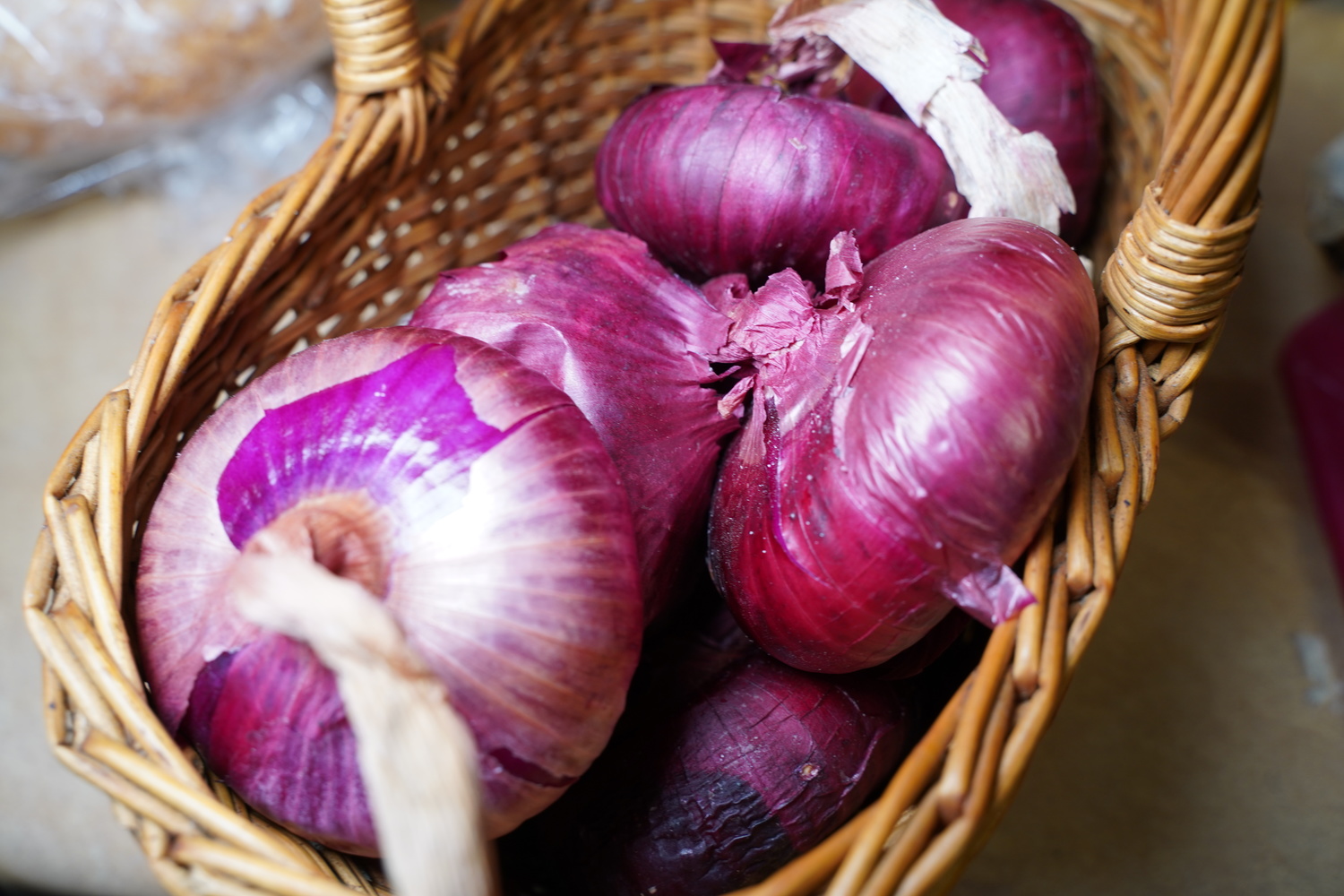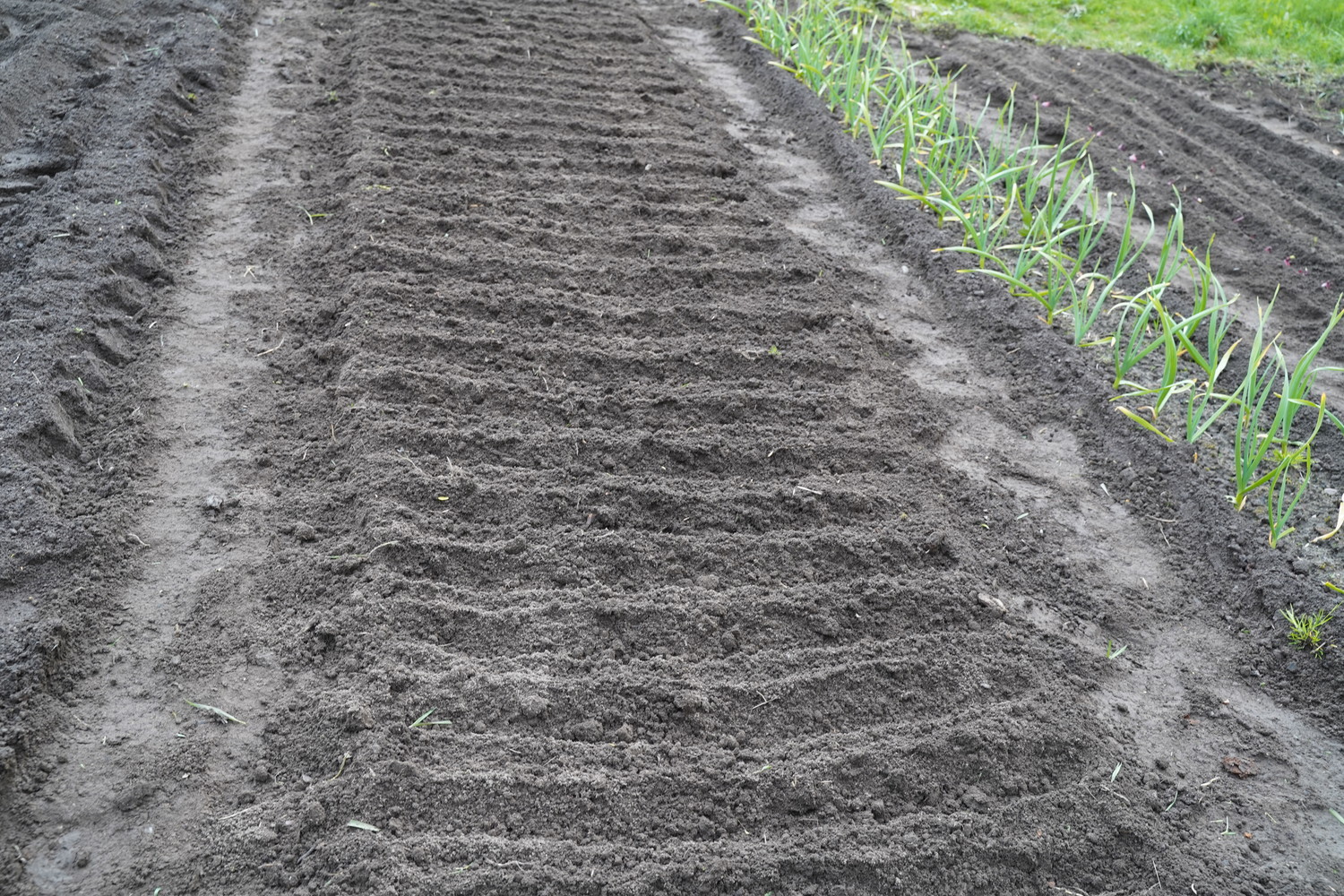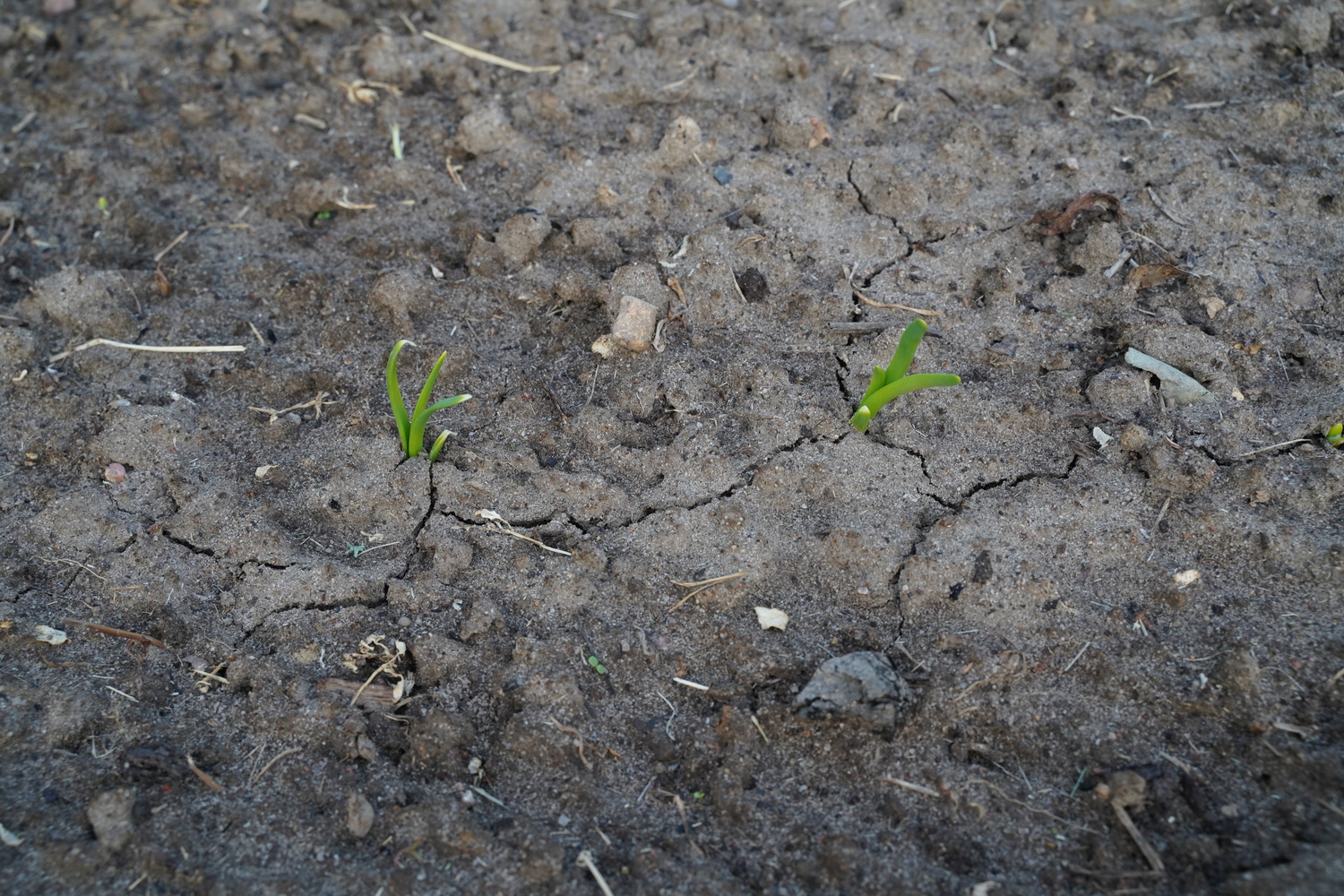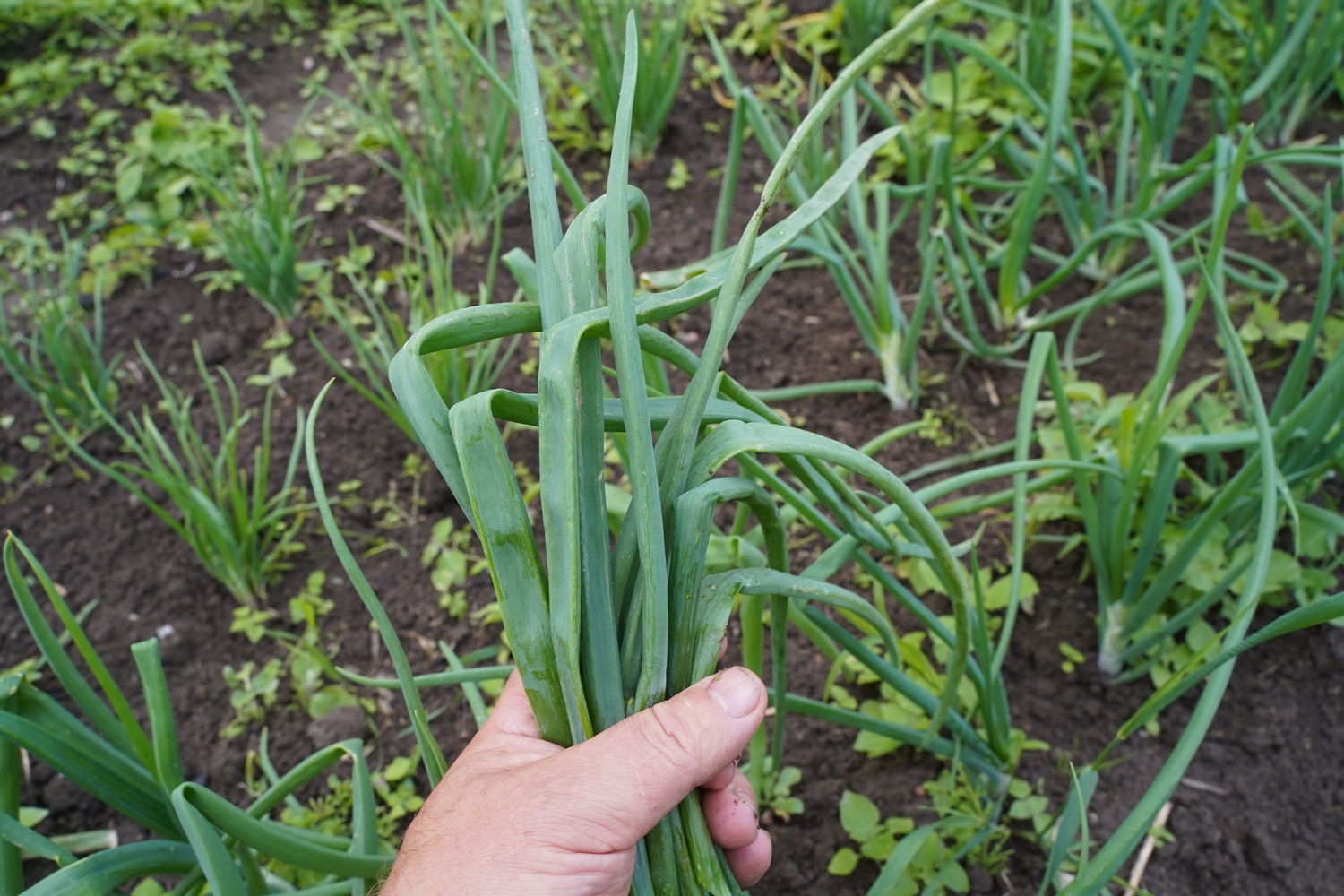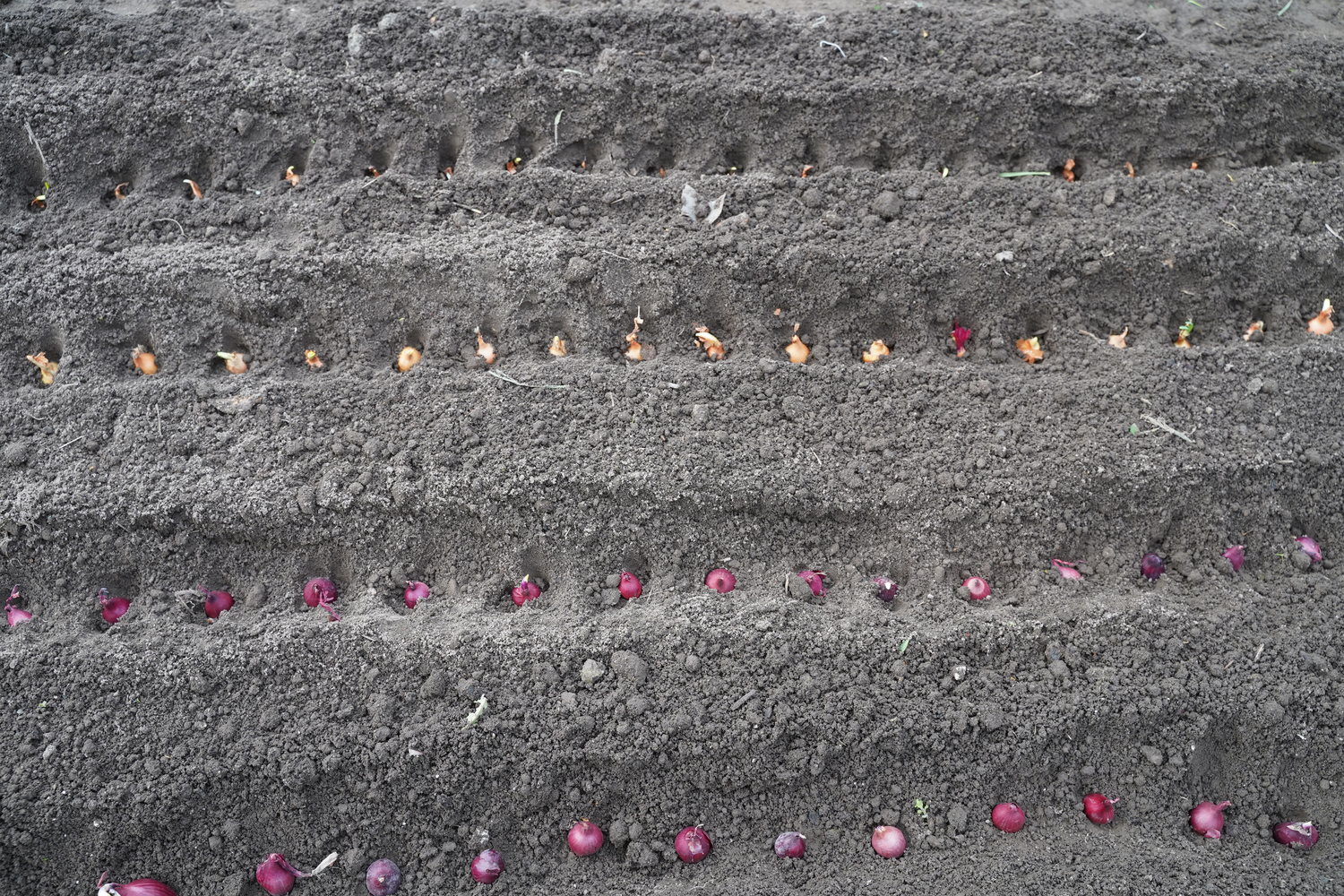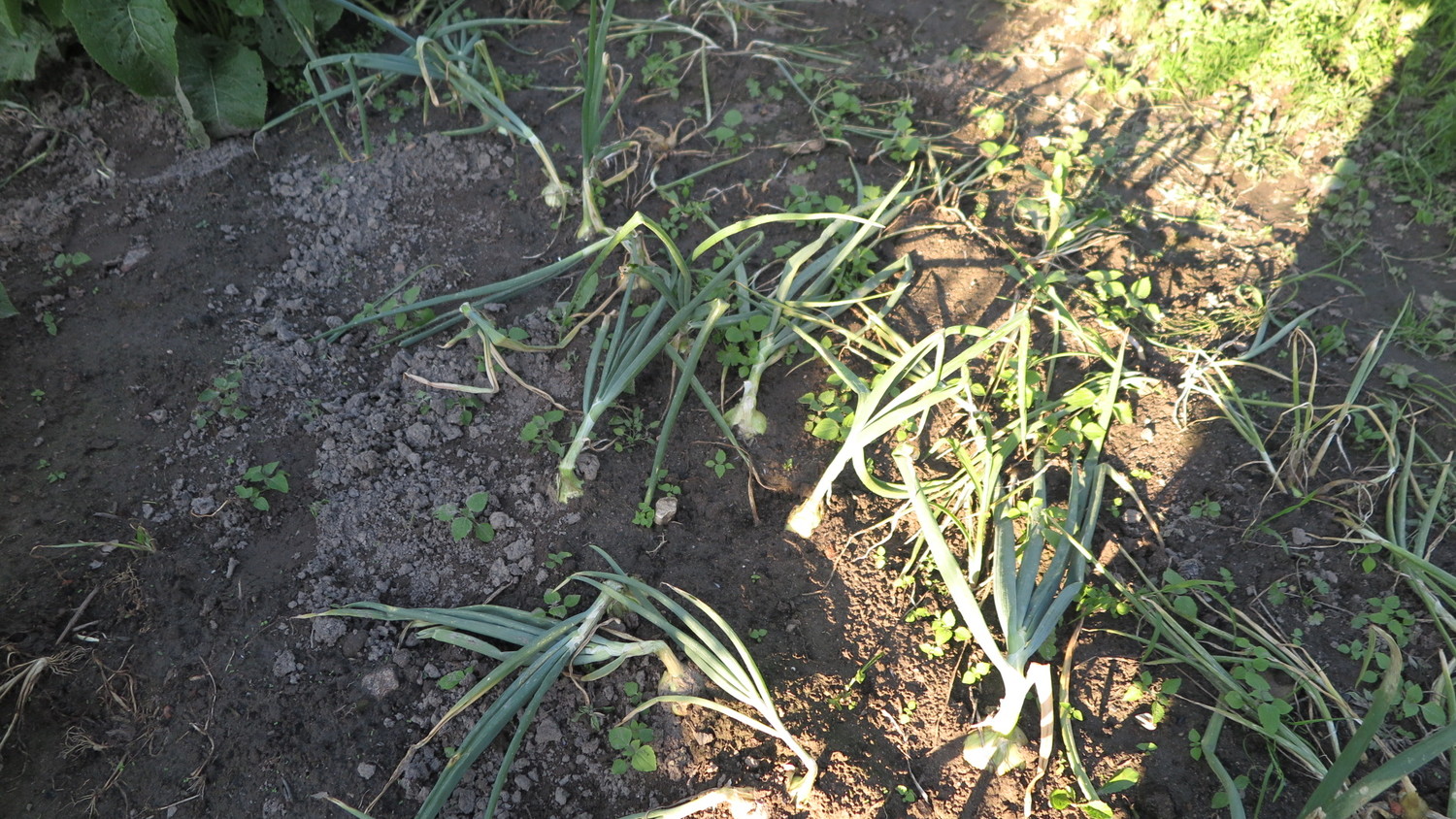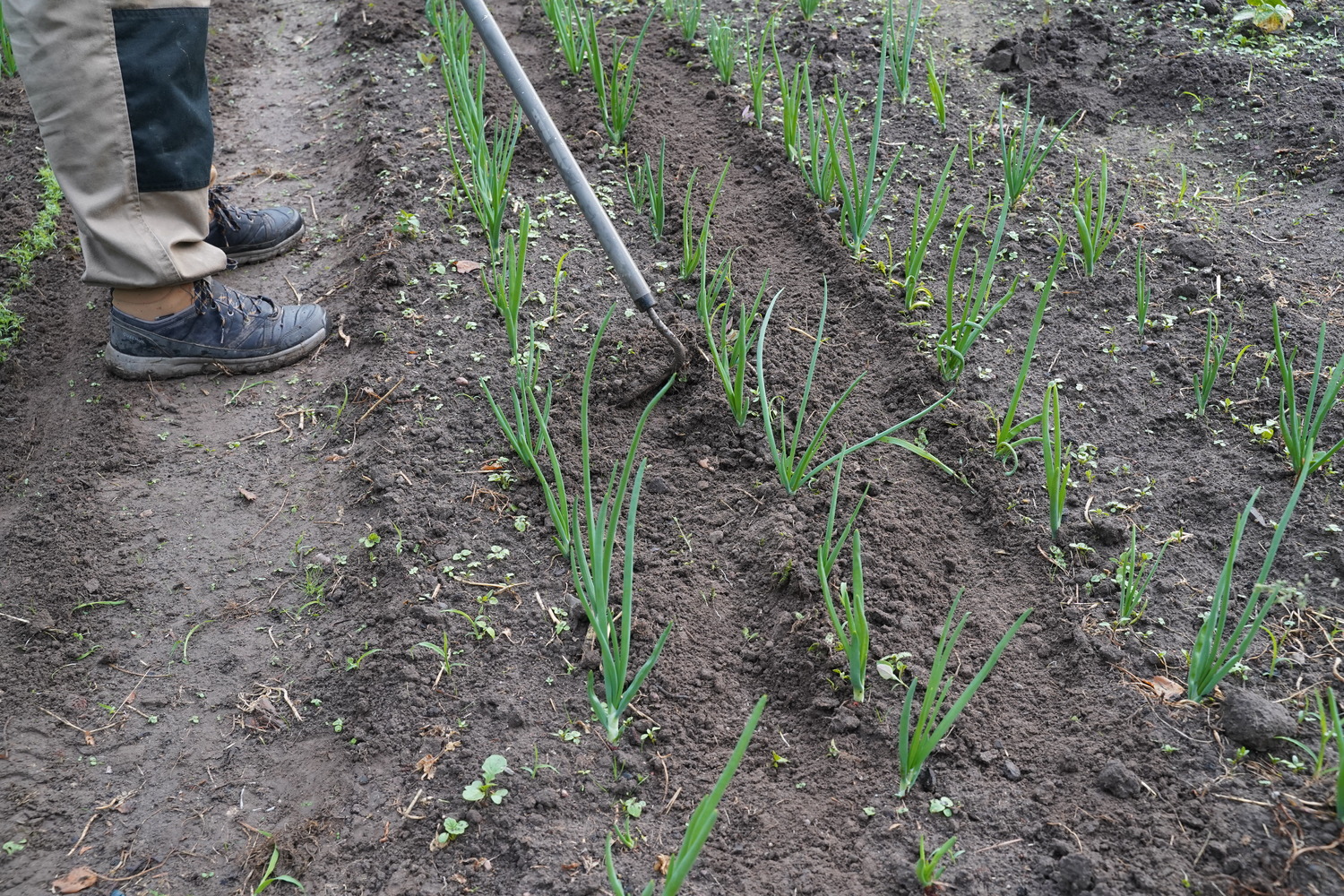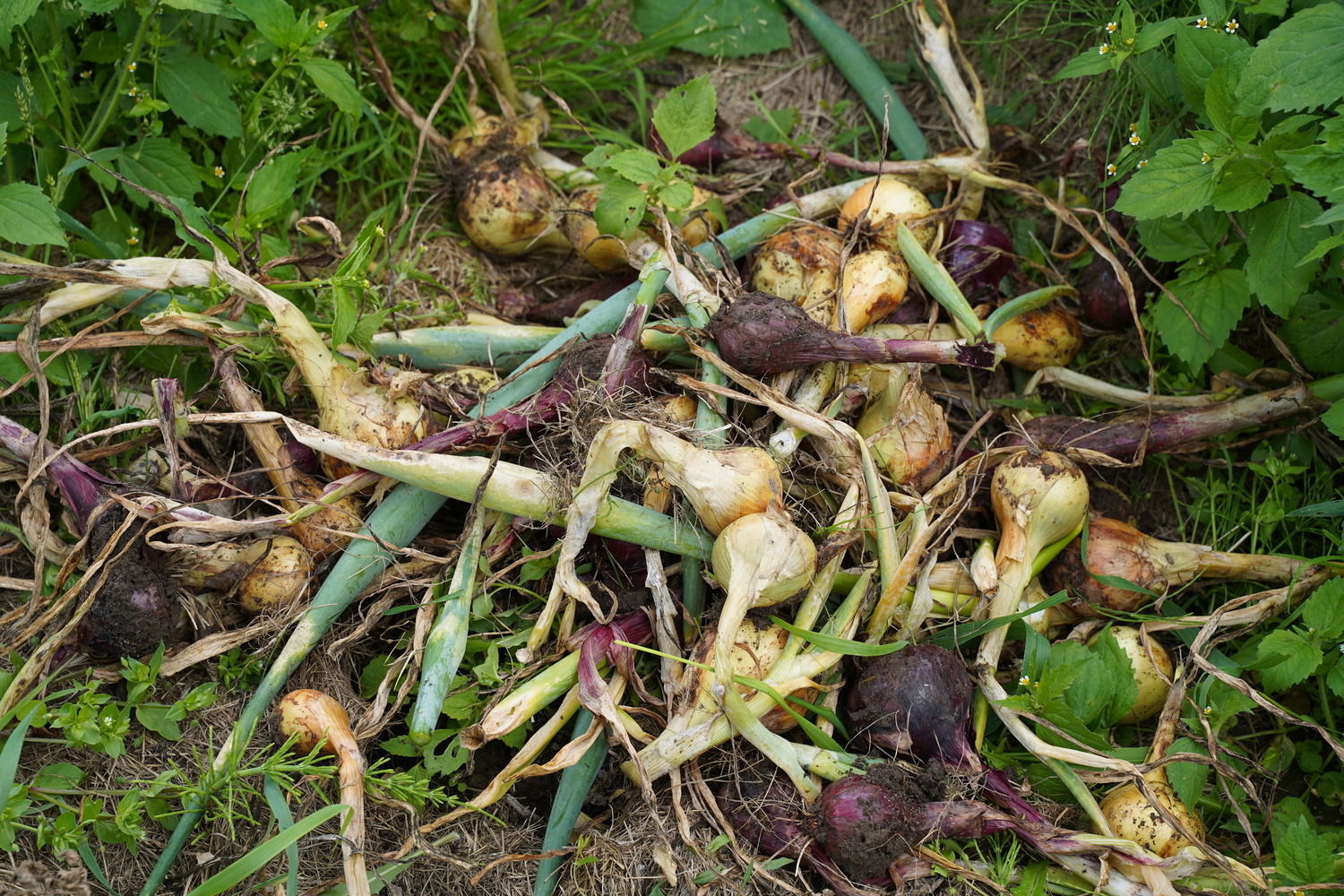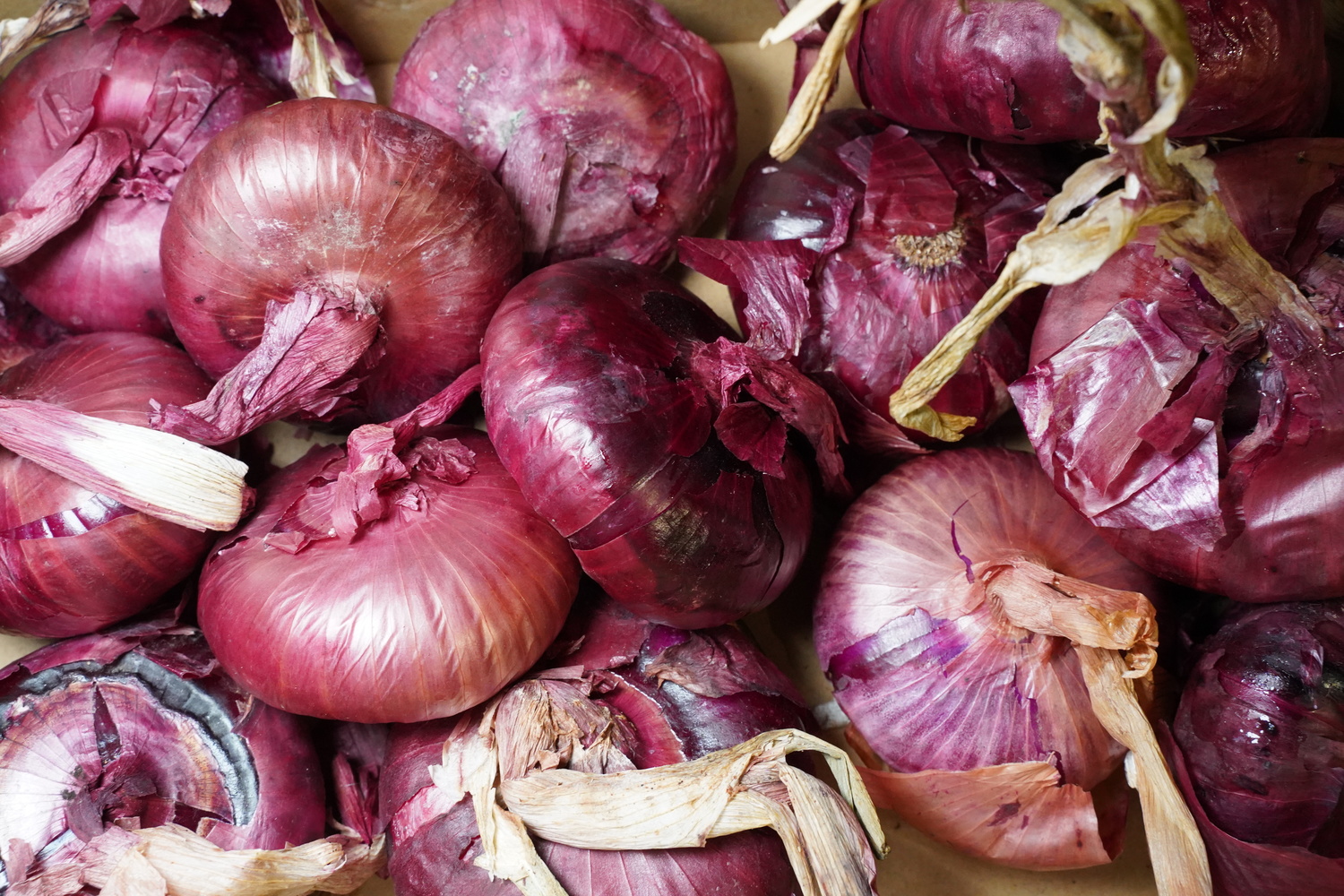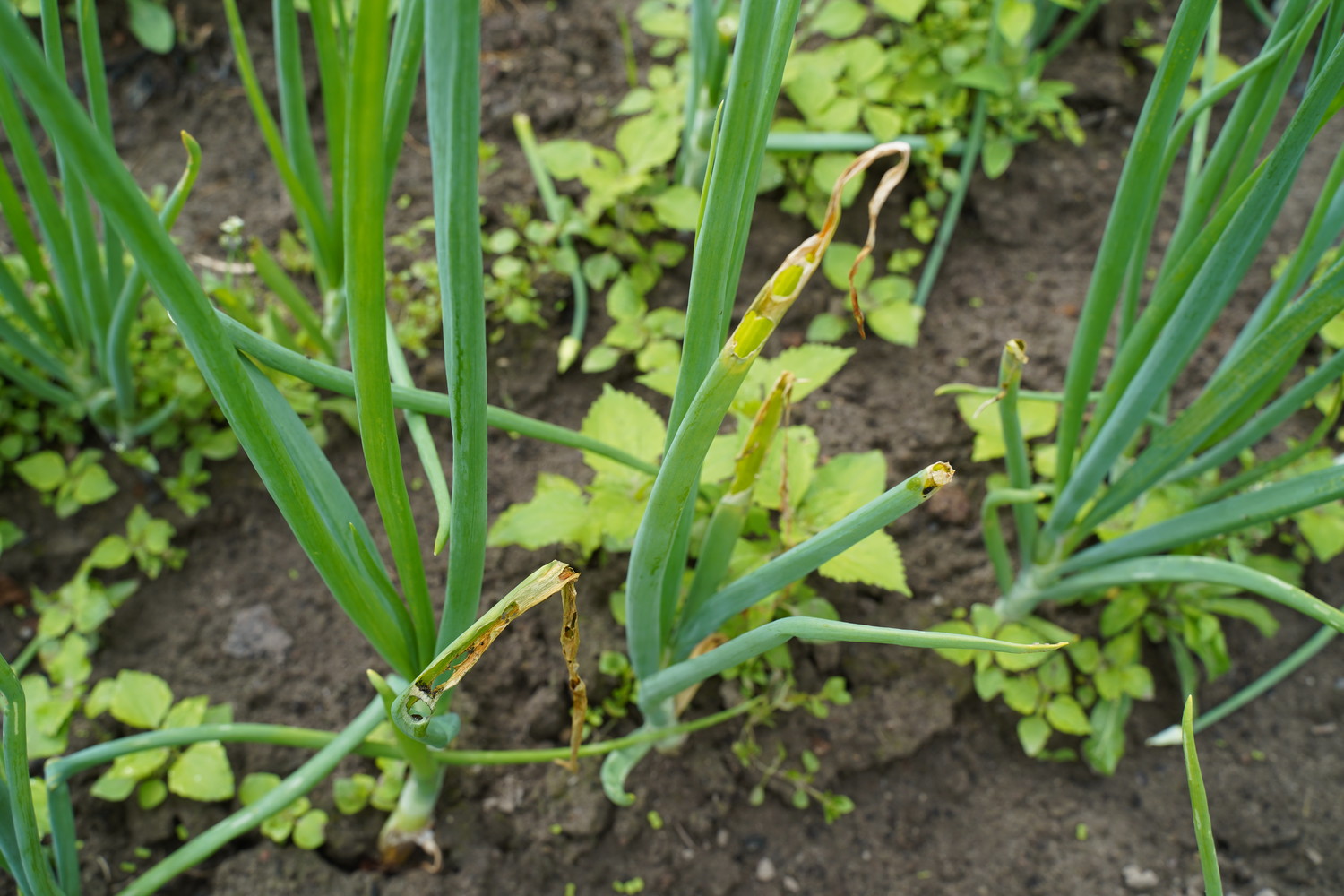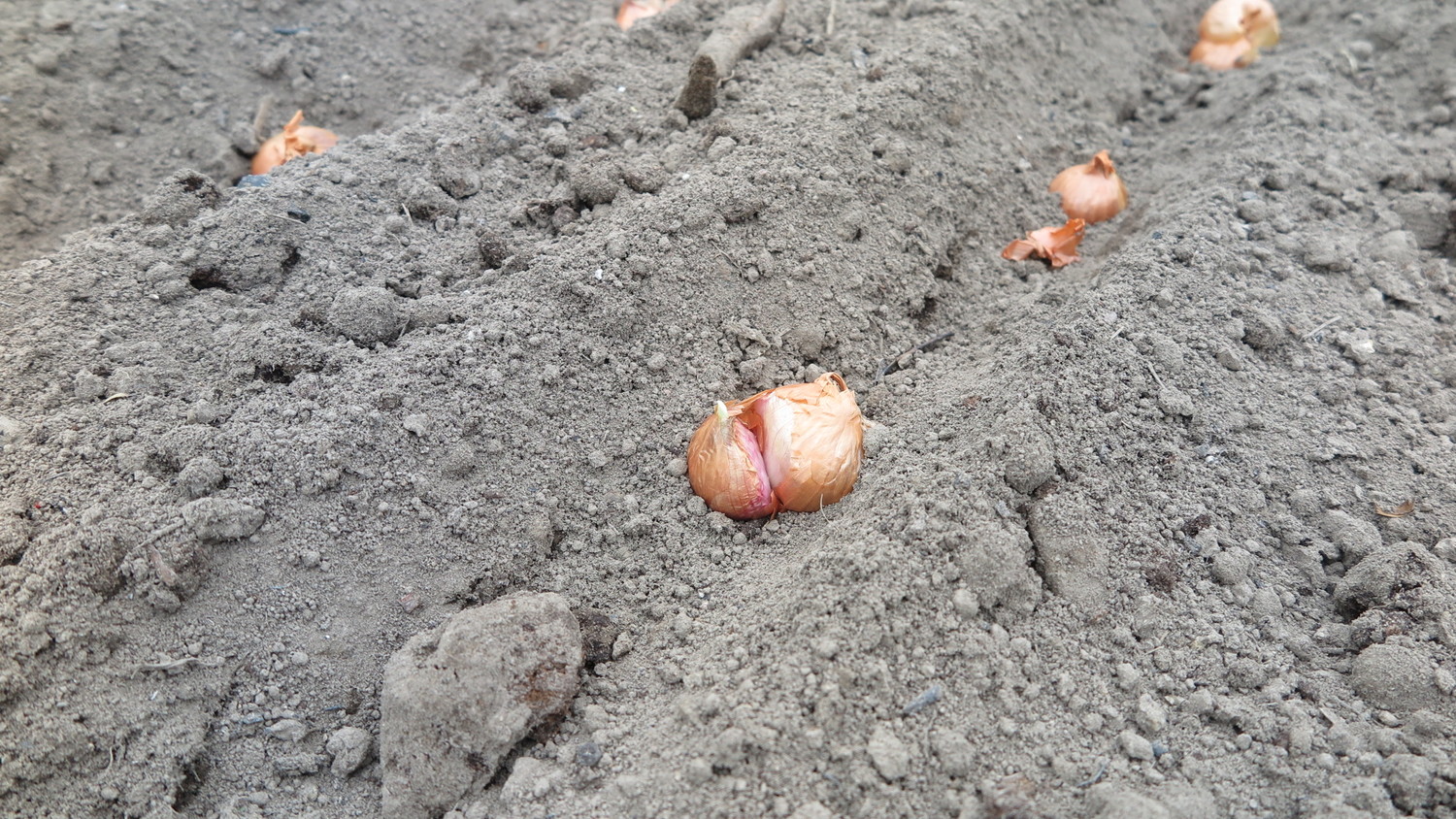Onions are used in almost every dish. The high demand for onions creates excellent opportunities for industrial onion cultivation. Being low-maintenance regarding growing conditions and agricultural practices, onions are among the most popular industrial crops worldwide. A private garden wouldn’t be complete without onions.
Onions (Allium) are biennial and perennial plants belonging to the Alliaceae family. There are about 300 species, many of which grow wild in the Northern Hemisphere. The most popular variety is the bulb onion, which has been used as food for over 6,000 years.
Onions are rich in vitamins and minerals. In 100 g of onion bulbs or leaves, there are 0.25/2.6 mg of carotene, 0.03 mg of vitamin B1, 0.1 mg of vitamin B2, 1 mg of nicotinic acid, 9/79 mg of vitamin C, and 38/16 mg of essential oils. 100 g of onion bulbs contain 128 mg of potassium, 26 mg of sodium, 31 mg of calcium, 7 mg of magnesium, 0.5 mg of iron, and 12 mg of phosphorus.
Soil Preparation for Onions
Onions grow best in sandy loam and humus-rich, well-drained, loamy soil. When sowing, it is advisable to choose higher, warmer, and quickly drying soils. Heavy soil with an impermeable subsoil or sandy soil is unsuitable for onions. The soil should be close to neutral (pH 6.4-7.9).
Soil preparation for onions begins in the fall, immediately after harvesting the previous crop. The best predecessors are cucumbers, pumpkins, potatoes, legumes, and root vegetables. It is ideal if the prior crop was fertilised with organic fertilisers. Fresh manure is not suitable, as onions will take longer to mature, growing more leaves, which would make them more susceptible to onion flies and rot. In the fall, the soil is deeply tilled, incorporating well-rotted manure or compost (3-5 kg/m²), and wood ash (0.5-1 kg/m²) is particularly beneficial. Fertilisation with mineral fertilisers is applied: 20-30 g of superphosphate and 15-20 g of potassium chloride per m².
In the spring, to retain soil moisture, the soil is tilled shallowly (up to 10 cm) or loosened with a rake. Half of the autumn mineral fertiliser amount is applied in spring, including 20 g of ammonium nitrate.
In an industrial onion field, the estimated NPK fertiliser consumption per hectare should be: nitrogen (N) – 80-110 kg, phosphorus (P) – 80-120 kg, potassium (K) – 120-140 kg.
Growing Onions from Seeds
Growing onion sets from seeds is often a separate business. The grown sets are later sold to amateur gardeners, farmers who cultivate onion sets, and those growing leeks. It is also possible to sow and grow your own sets in your garden.
The first planting begins in mid-April. On average, about 4 to 5 kilograms of onion seeds are used per hectare. The optimal distance between rows is 8 to 10 centimeters, with a sowing depth of 1.5 to 2 centimeters. Lighter soils are more suitable. Due to the lower soil temperature, onions from the first planting grow slower and germinate after three weeks.
Sowing can continue for a few more months as long as the soil remains sufficiently moist. Onions from later sowings tend to germinate faster, sometimes within a week, especially when the soil warms up and there is enough moisture.
The first thinning is done when the seedlings have developed 2-3 leaves, with a spacing of 2-3 centimeters between them. The second thinning occurs when the seedlings reach 15 centimeters, leaving 6-10 centimeters of space between them.
Under suitable conditions, it is possible to grow normal-sized onions from seeds. When growing onions for edible bulbs, the spacing between seedlings is increased. The planting bed should be kept free of weeds, and densely sprouted onions should be thinned out. Larger onions will grow better when sown in a greenhouse, with the seedlings later transplanted outdoors.
In weedy soil, onion seedlings can be overshadowed by weeds, especially in amateur gardens. When sowing onions, mix them with radish seeds. Radishes germinate quickly and help mark the onion rows effectively.
Onion Growing for Leaves
During the cold season, onions for greens are grown in greenhouses. In heated greenhouses, sets of first-year onion bulbs are planted. In greenhouses, onions are typically grown in a peat substrate with a pH of 5.8 to 6.5, which is additionally enriched with minerals. The substrate temperature should be around 20-22 °C. The air temperature should be similar during the day and can be a few degrees lower at night. In autumn and winter, smaller onion sets, 3-5 centimeters in diameter, are planted, while in spring, larger ones can be used. To increase greenhouse productivity, planting on multiple levels by installing shelves is possible. The onion sets are planted close together, about 80-100 per square meter. The harvest is typically ready after about four weeks. For greenhouse cultivation, the Stuttgarter Riesen variety of onion is recommended. This variety has one of the highest yields of greens compared to others, with slightly flatter leaves and a mild taste.
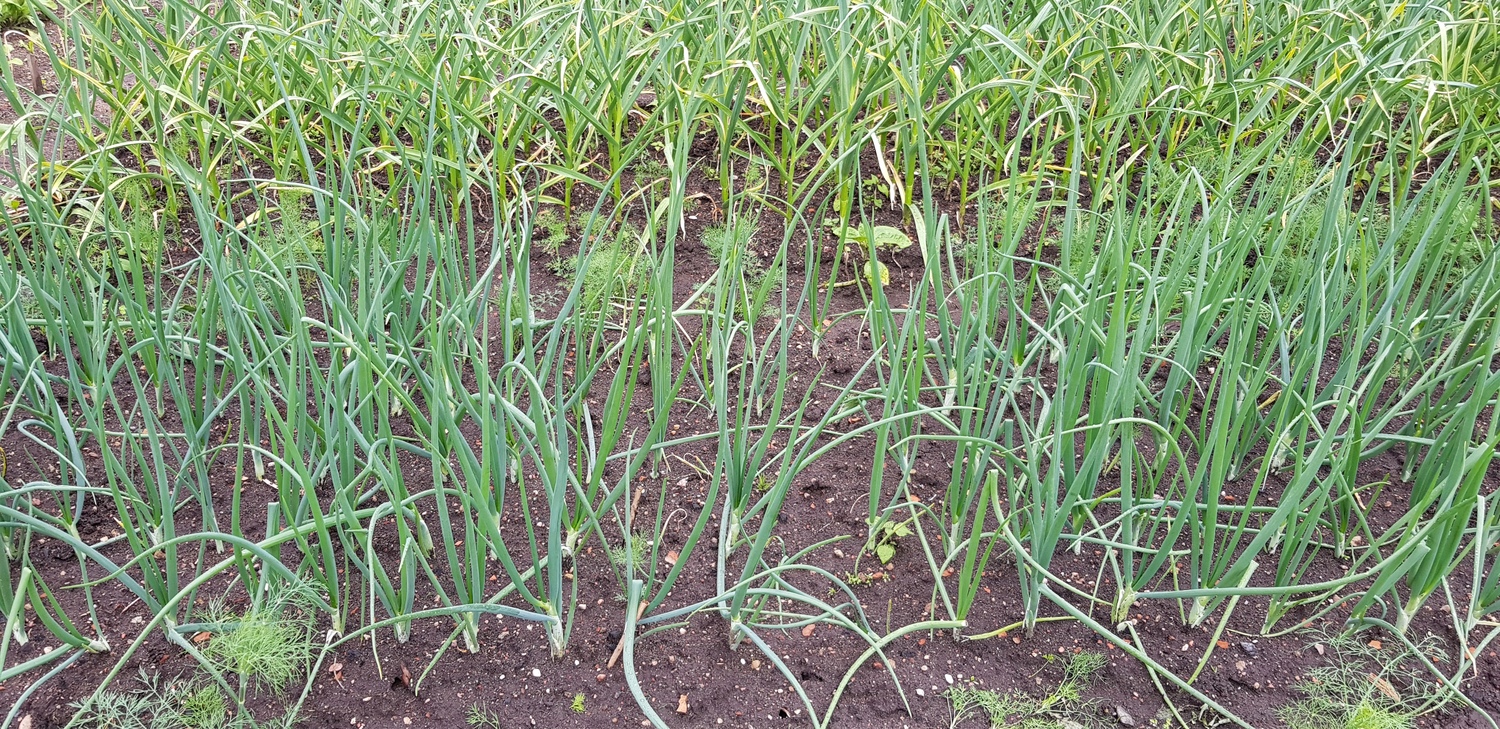
When planted more densely, part of the onions can be used for greens, while part will grow into bulbs. The yield of bulbs will be slightly lower.
Growing Onions from Seedlings
The seedlings are kept at room temperature (optimal temperature - 18-20°C). Cold-stressed seedlings will produce stems.
The seedlings are planted when the bird cherries begin to bloom, typically from mid-April to early May, when the soil still retains plenty of moisture. When planting, press them firmly into the soil to help them root more quickly. The depth of planting the seedlings is about 1 centimeter, as planting deeper may cause onions to produce stems. The optimal distance between seedlings is 6-10 cm, with 20 cm between rows. Multi-headed onions are planted at a greater distance.
By cutting off the tops of the bulbs, the growth of greens is stimulated. It is better to promote root growth by peeling off the old skin, as the substances within it can inhibit both root and leaf growth. Part of the root base can also be trimmed. The planted bulbs should be kept warm at a temperature of 18-20°C, as bulbs kept at lower temperatures will start to flower.
Onions are harvested when the stems bend over. Stuttgarter Riesen onions.
Growing Multi-Headed Onions
Some ethnographic onion varieties are propagated vegetatively. When an onion set is planted, it grows from 5 to 15 onions. These onions are usually smaller and sharper in taste.
Multi-headed onions also include the rapidly growing Shallots. They accumulate more sugar and are less pungent. Unfortunately, the varieties currently offered are not well adapted to our climate and struggle to grow in the heavier soils typical for regular onions.
The Tosca variety of edible onions. While not a Shallot, it is very similar in characteristics.
Growing Onions
Onions are fairly resistant to cold. They can easily withstand spring frosts, but the young seedlings may die if exposed to 2-3 degrees below 0°C. The optimal temperature for growing greens is between 15-25°C. They require plenty of light, especially when grown from seeds.
Seedlings often start to produce stems. As soon as this is noticed, they should be trimmed down to the base. It is also worth adding extra nitrogen fertiliser. When the seedlings reach a height of 15 centimeters, additional fertilisation with potassium (10 kg/ha) and phosphorus (10 kg/ha) fertilisers can be applied.
In dry weather, onions are watered every 10 days, soaking the soil to a depth of 15-20 cm. After watering, the soil should be loosened. Watering is not necessary during the month before harvest, as moisture can hinder the development of the onion bulbs.
When the bulbs begin to form, the soil around the onions is loosened up to the middle of the bulbs, ideally after rainfall when the soil is soft. To help the bulbs store better, the stems are bent a few weeks before harvest.
Onion Harvest
When growing onions for personal use and aiming to reduce nitrate levels, it is recommended to plant them at a greater distance. When planted in rows 30 centimeters apart, onions accumulate fewer nitrates.
Onions are harvested on a sunny day before the frost sets in. After drying, they are moved to dark sheds. The stem is trimmed 3-4 centimeters from the neck.
Onion Diseases and Pests
One of the most dangerous diseases affecting growing onions is downy mildew. The cause of the disease is onion peronospora (Perenospora Schleidenii Unger). Ash-colored lesions begin to appear on the leaves of onions planted from seedlings and bulbs. Later, the leaves turn yellow, wilt, and break. The conidia of the fungi spread through the air, and the disease spreads rapidly in humid conditions.
The disease agents spread through infected seeds, diseased seedlings and bulbs, as well as contaminated onion residues in the soil. To protect against disease, bulbs are kept in a warm environment at 40°C. Large bulbs are kept for 24 hours, medium-sized bulbs for 16 hours, and small bulbs for 8 hours.
Protection is achieved by planting onions in the same location only after 4 years. The planting sites should be chosen in higher, well-ventilated areas. Winter onions can be a source of the disease, so it is advisable to plant onions further apart. Infected plants should be sprayed with fungicides as soon as disease symptoms appear. After harvesting, plant residues should be removed.
The most dangerous disease for stored onions is gray (moldy) rot (Botrytis allii Munn). Onions get infected with gray rot outdoors, but the disease develops in a hidden form and is difficult to detect. The severe development of the disease begins after 6-8 weeks. Gray, dusty lesions form on the onion neck, and later, black sclerotia appear in the lesions. When cut, the onion looks as if it were cooked, softening. The disease spreads through planting material and soil. To protect against it, onions should be planted promptly, and onions should be kept as long as possible without removing the green leaves. When drying, onions should be kept for 8-10 days at a temperature of 30-35°C. In storage, the humidity should not exceed 65-75%.
The onion fly (Delia Antiqua Mg.) is the most harmful pest for onions. The onion fly is similar to a housefly, about 7 mm long, gray, with black legs. The larvae, which hatch from laid eggs, damage the onions by burrowing into the bulbs. Affected plants turn yellow from the tops, growth slows down, and the bulbs start to rot. The pupae overwinter in the soil, with the first generation of flies appearing when lilacs bloom and the second generation in July or August. To protect against flies, crop rotation should be practiced, and the soil should be deeply plowed in the fall. The soil around the plants can be mulched with peat. When the tops of the leaves start to yellow, water the plants with a hot alkaline solution of wood ash (1 kg of ash in 10 liters of water). Apply 200 ml of the solution per plant. Dried plants should be removed from the garden.
Onion Varieties
Bulb onions are categorised into hot, semi-hot, and sweet varieties. Hot onions contain a high amount of essential oils, and their sprouts are more frost-resistant (down to 6-7°C) compared to medium-hot or sweet onions. They store well during winter and are propagated by bulbs. Semi-hot onions contain fewer essential oils and do not store as well during winter. When stored at 12-18°C, some varieties may start to sprout in spring. Sweet onions have scant essential oils, are mild in flavor, and are most commonly eaten raw. They do not store well during winter, especially at higher temperatures (12-18°C).

